Abstract: Yueqing Technology released a white paper on laser processing programming and simulation technology, which describes the difficulties of high-precision control of laser processing technology application, and further discusses the trajectory and simulation scheme of laser processing, how to effectively use iRobotCAM to complete laser processing and simulation, and greatly improve the equipment development of laser process application scenarios and laser process application efficiency.
- Overview of the laser industry
The laser industry has a huge scale of employment and future market size, and the industry is in a period of rapid development.
- Characteristics of laser technology
The biggest process characteristic of laser is high precision. In order to further understand the application of laser technology, we start from the equipment scenario of laser technology application, and take the development and application of laser machine tools and robot laser processing applications as typical applications to further analyze its difficulties and further explain the solutions.
- Development and application of laser machine tools
Starting from the equipment development process of laser machine tools, we can further understand the application difficulties and solutions of laser technology on machine tools.
Laser machine tool development process: 3D structure modeling < electromechanical modeling and motion simulation < trajectory generation and virtual debugging < post-processing and processing simulation
The following uses iRobotCAM as a software solution for laser machine tool development and debugging to explain how to implement laser machine tool development and virtual debugging step by step, and realize the mass production and application of laser machine tools.
1) 3D structure modeling: iRobotCAM uses the characteristics of 3D CAD platform to quickly build a digital model of the machine tool’s 3D structure.
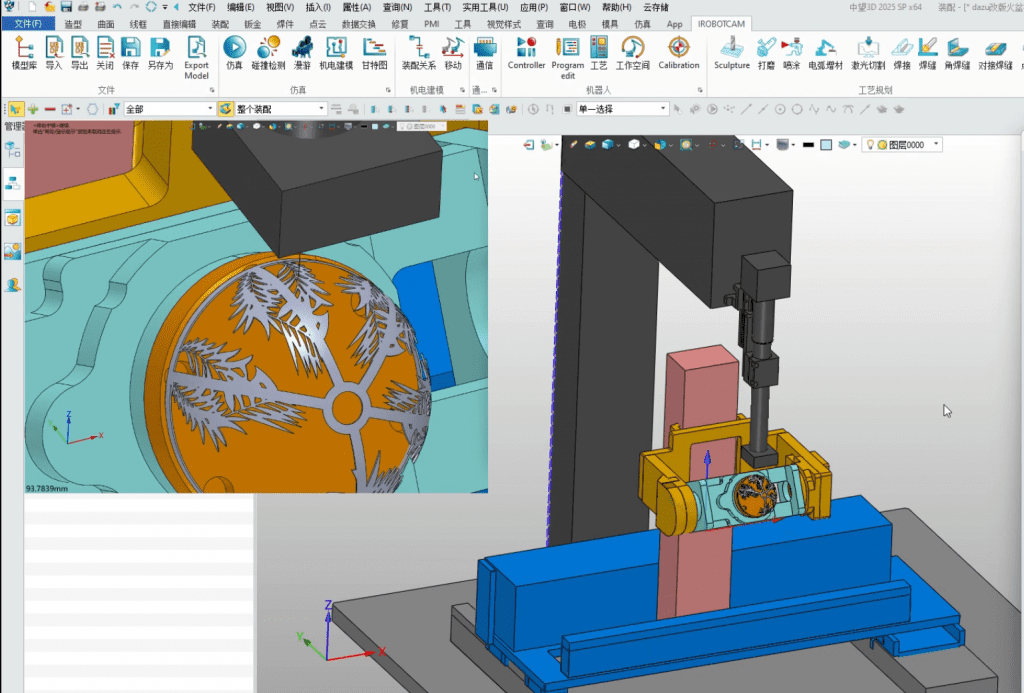
2) Electromechanical modeling and motion simulation: iRobotCAM has an electromechanical modeling module that can be used for modeling and design of production lines and virtual debugging of robots. Before actual production, the laser processing process can be simulated in a virtual environment to discover and solve possible problems in advance, such as robot motion collision interference, checking robot singularity, reachability and collision, and laser path errors, etc., to reduce errors and risks in actual debugging and improve production efficiency and safety.
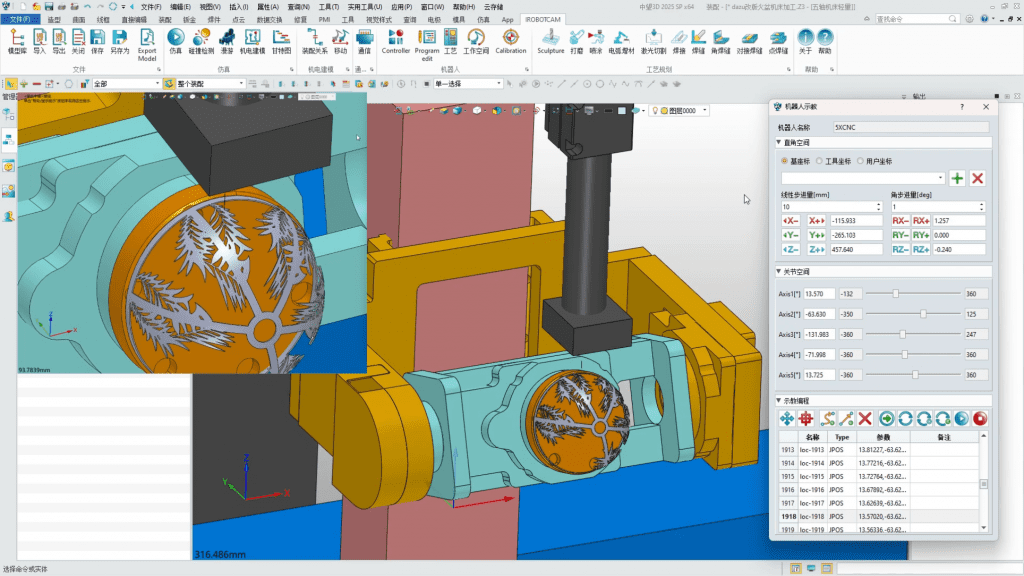
3) Trajectory generation and virtual debugging: Developed based on the ZW3D platform, it can utilize ZW3D’s various 2-axis to 5-axis trajectory algorithms, so that the robot has accurate trajectory algorithms similar to CAM software during the laser processing process, and can accurately focus the laser beam on the processing part, realizing high-precision laser cutting, welding, engraving and other processes, ensuring processing quality and consistency.

4). Post-processing and machining simulation: iRobotCAM’s convenient post-processing module can quickly generate code and intuitively display machining simulation effects
Let’s take a look at how iRobotCAM uses 5-axis machine tools to achieve laser processing and simulation:
4. Application of robot laser technology
The robot laser technology is mainly high-precision, and the ability to achieve high-precision manufacturing using lasers is the basis for various industries such as aerospace, automobiles, and machinery to achieve high-performance or high-precision equipment. As for the robot industry, what are the difficulties in the application of laser technology? How to quickly realize the application of robot laser technology?
First of all, for robot laser processing technology, the general process is as follows:
Import robot and workpiece> Positioning of workpiece and robot calibration> Realization of trajectory programming> Simulation of the whole scene> Code output and robot processing
From the above process, it can be seen that the focus of laser technology is on the establishment of a digital environment and the output and simulation of code. Let’s take iRobotCAM offline programming software as an example to explain how to use iRobotCAM to achieve efficient application of robot laser technology.
1) . Using iRobotCAM, which is based on the capability of 3D CAD platform, the digitization of equipment and process can be quickly modeled
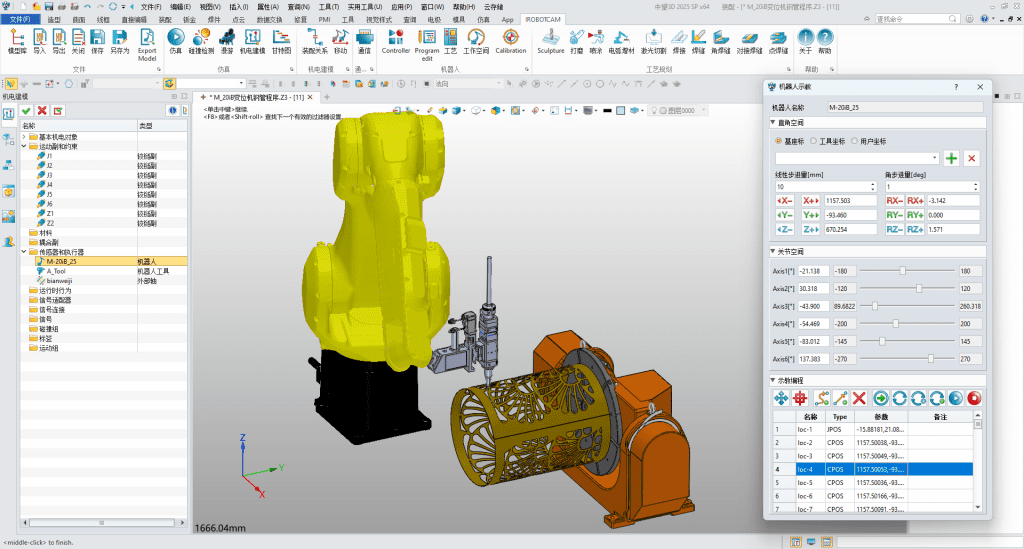
2) . Using iRobotCAM’s machine library, you can quickly build robots or tools related to laser applications, avoiding the need to repeatedly build basic parts libraries in the future, and helping companies use digital models more efficiently.
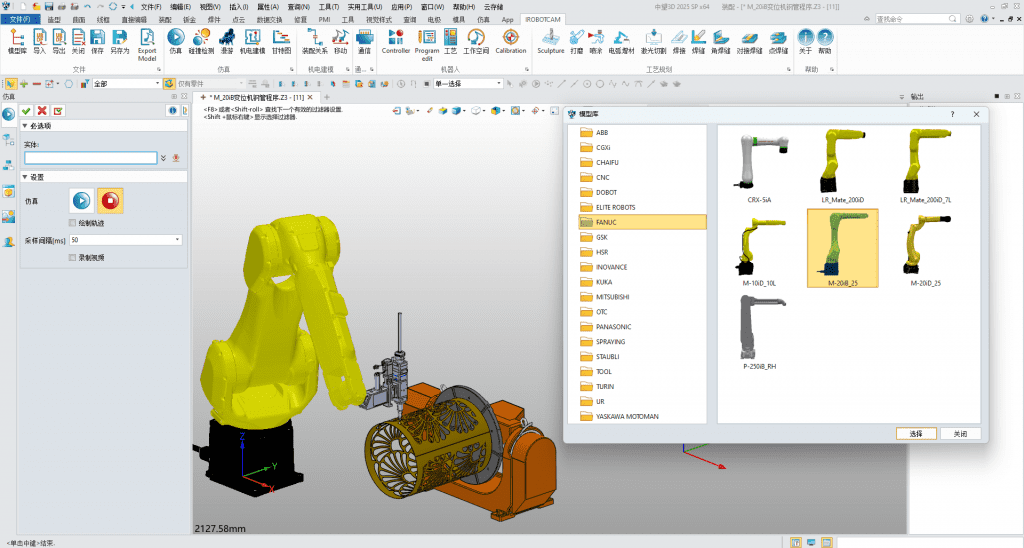
3). By utilizing iRobotCAM’s unique positioning function, the workpiece can be quickly and accurately positioned according to the laser processing requirements. More specifically, iRobotCAM can achieve workpiece positioning under various working conditions based on the workpiece’s CAD features.
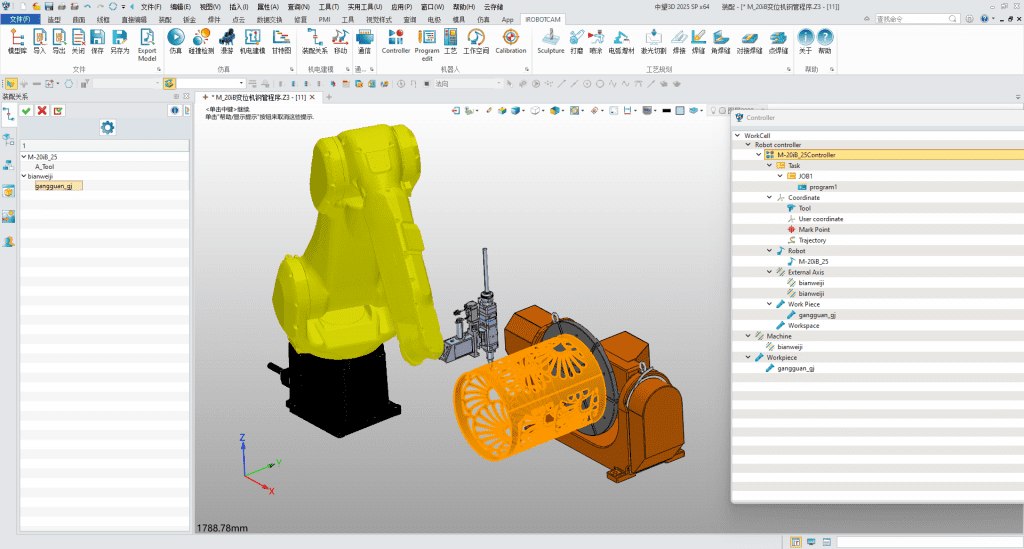
4) . By utilizing the trajectory generation capability of iRobotCAM, it is possible to generate complex multi-axis trajectories on curved surfaces and realize the application of laser processes for robots with more than 7 axes.
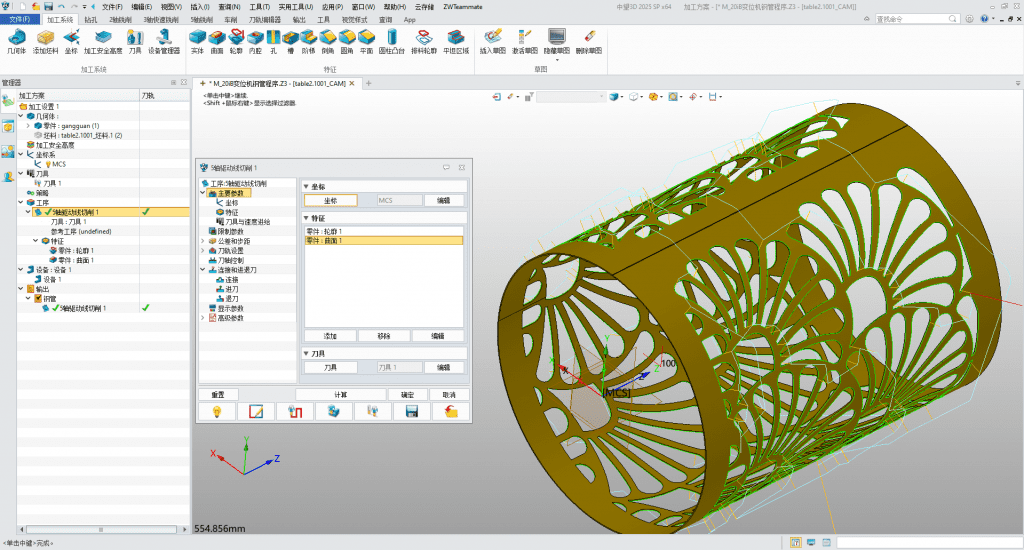
5). iRobotCAM’s robot virtual debugging capabilities can be used to realize robot laser scene programming and virtual simulation, and efficiently view the application effect of robot technology.
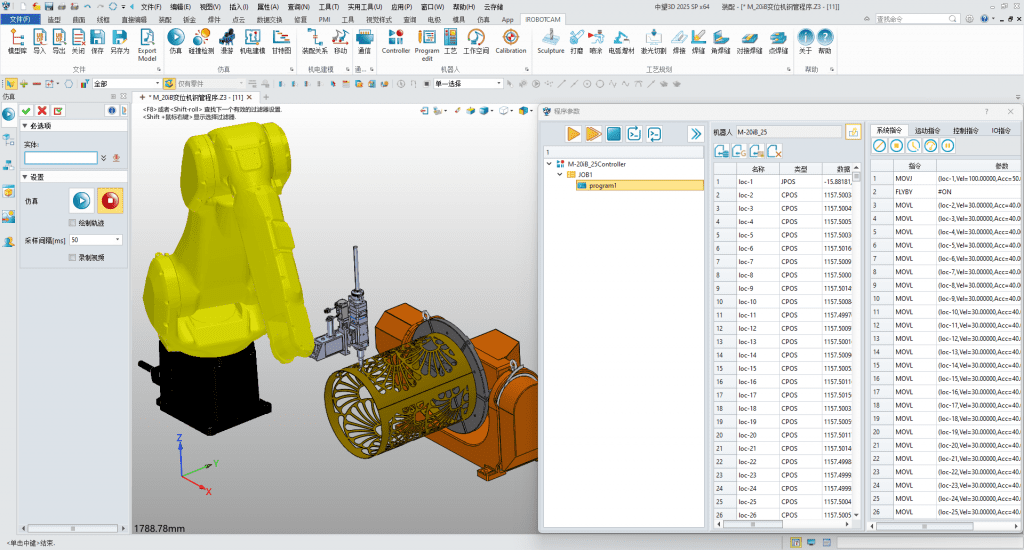
6. By utilizing the post-processing capabilities of iRobotCAM, you can efficiently adapt to various types of robots including FANUC, ABB, Yaskawa, KUKA, GSK, STEP, Estun, Turin, etc., and efficiently use one set of software to manage multiple brands or multiple devices.
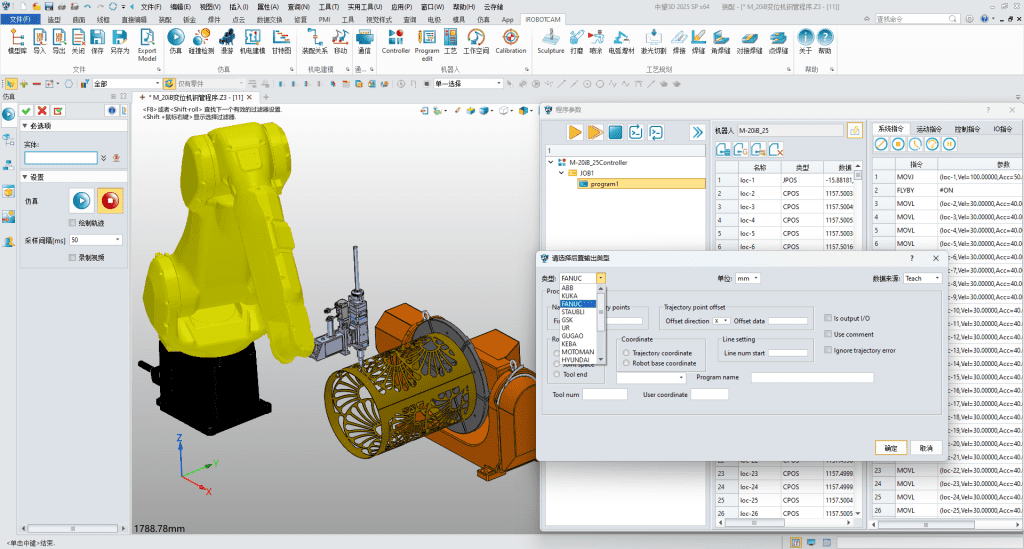
Next, let’s take a look at how iRobotCAM uses robots to achieve 5-axis hollow pattern processing. Through iRobotCAM’s flexible programming capabilities, 5-axis trajectory generation and rapid robot simulation can be achieved.
5. Summary
The core point of laser technology application is precision, which requires programming and simulation to have high-precision architecture design. Through the above typical 5-axis laser processing machine application cases and robot multi-axis laser processing application scenarios, it can be seen that choosing iRobotCAM as a solution for laser processing and virtual debugging can effectively solve the underlying high-precision problem of laser processing. And further expansion, as a process application of laser processing, iRobotCAM can further expand its application in more scenarios including laser cutting, laser cladding, arc additive manufacturing applications, etc. due to the openness of its technical architecture and reflect its obvious high-precision technical advantages.
About Yueqing Technology
Yueqing Technology is committed to building an open iRobotCAM robot offline programming platform, which is a digital solution integrating electromechanical conceptual design of production lines, robot processing programming simulation, and virtual debugging.
iRobotCAM website: www.iRobotCAM.com; Contact: cooperation@iRobotCAM.com


